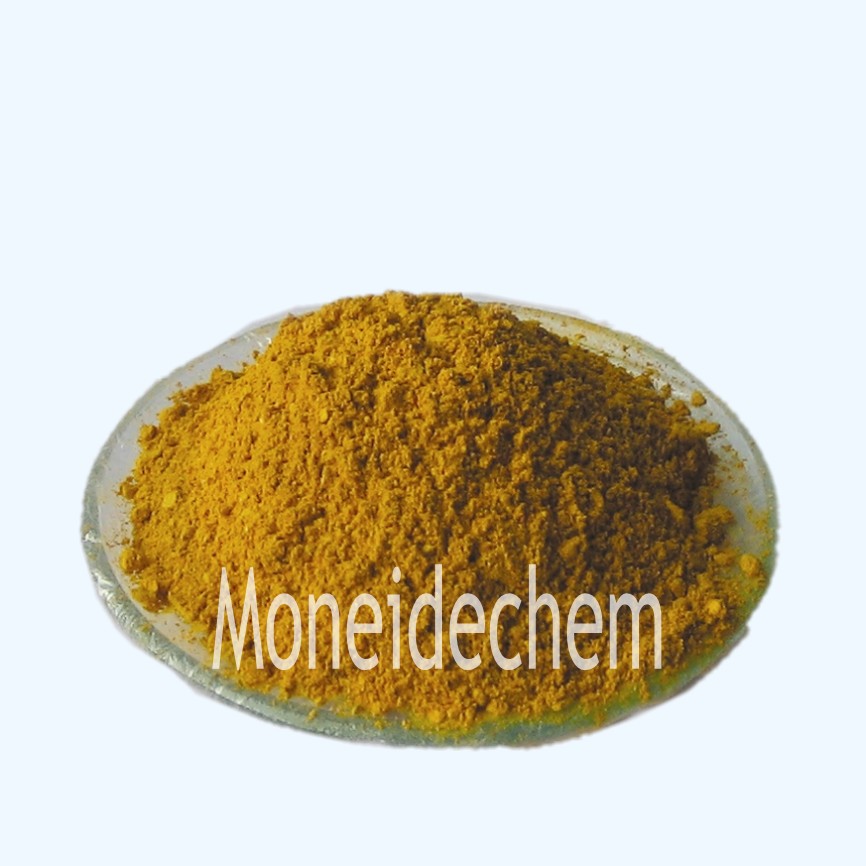모네이드 케미컬스
Tel: 86-315-8309571
WhatsApp/WeChat/Mobile: 0086-15633399667
스카이프: janet-honest
주소: 2-7-523 Jidong Building Materials Tangshan, Hebei 064000 중국
Mordant Yellow 1
|
화학명 |
Mordant Yellow 1 |
|
다른 이름 |
C.I. 14025; Alizarin Yellow GG; 5-(3-Nitrophenylazo)salicylic acid sodium salt |
|
CAS 번호 |
584-42-9 |
|
분자식 |
C13H8N3NaO5 |
|
EINECS No. |
209-536-1 |
|
분자량 |
309.21 |
|
분자 구조 |
|
|
세부 |
Appearance: yellow powder Water Soluble Test: pass Sulfated ash(as SO4): 20% max. |
|
주요 응용 프로그램 |
Used as 산도 indicator and chromatographic analysis reagent. |
What is Mordant Yellow 1 used for?
Mordant Yellow 1 is primarily used as a dye in textile and fabric industries. It belongs to the mordant dye class, which requires a binding agent, or mordant, to fix the dye to the material, typically fibers like wool or silk. The dye is valued for its bright yellow hue and its ability to form stable complexes with metal ions, such as chromium or aluminum, enhancing colorfastness. Beyond textiles, it has historical applications in biological staining and as a pH indicator due to its color-changing properties in acidic or alkaline conditions. However, its use has declined with the advent of synthetic dyes offering better performance and environmental safety.
What is the function of Mordant Yellow 1?
The primary function of Mordant Yellow 1 is to impart a durable yellow color to fabrics, especially natural fibers like wool and silk. As a mordant dye, it works by forming insoluble complexes with metal salts (e.g., alum or chromium), which bond tightly to the fabric, ensuring wash- and light-fastness. Additionally, it serves as a pH indicator, transitioning from yellow to red under acidic conditions. In microscopy, it was once used to stain tissues or cells. Its chemical properties make it suitable for educational demonstrations in chemistry, though its practical applications are now limited due to more advanced alternatives.
What is Mordant Yellow 1?
Mordant Yellow 1 is an organic compound and a synthetic dye classified as an azo dye, characterized by its vibrant yellow color. Chemically, it is derived from sulfonated aromatic structures, enabling it to bind with metal ions like chromium or aluminum. This interaction is key to its role as a mordant dye, where the metal acts as a bridge between the dye and fabric. Historically, it was widely used in textiles and laboratory staining but has been largely replaced by safer, more efficient dyes. Its structure also allows pH-sensitive color changes, making it useful in early chemical indicators. Today, it remains a subject of interest in dye chemistry studies.






























